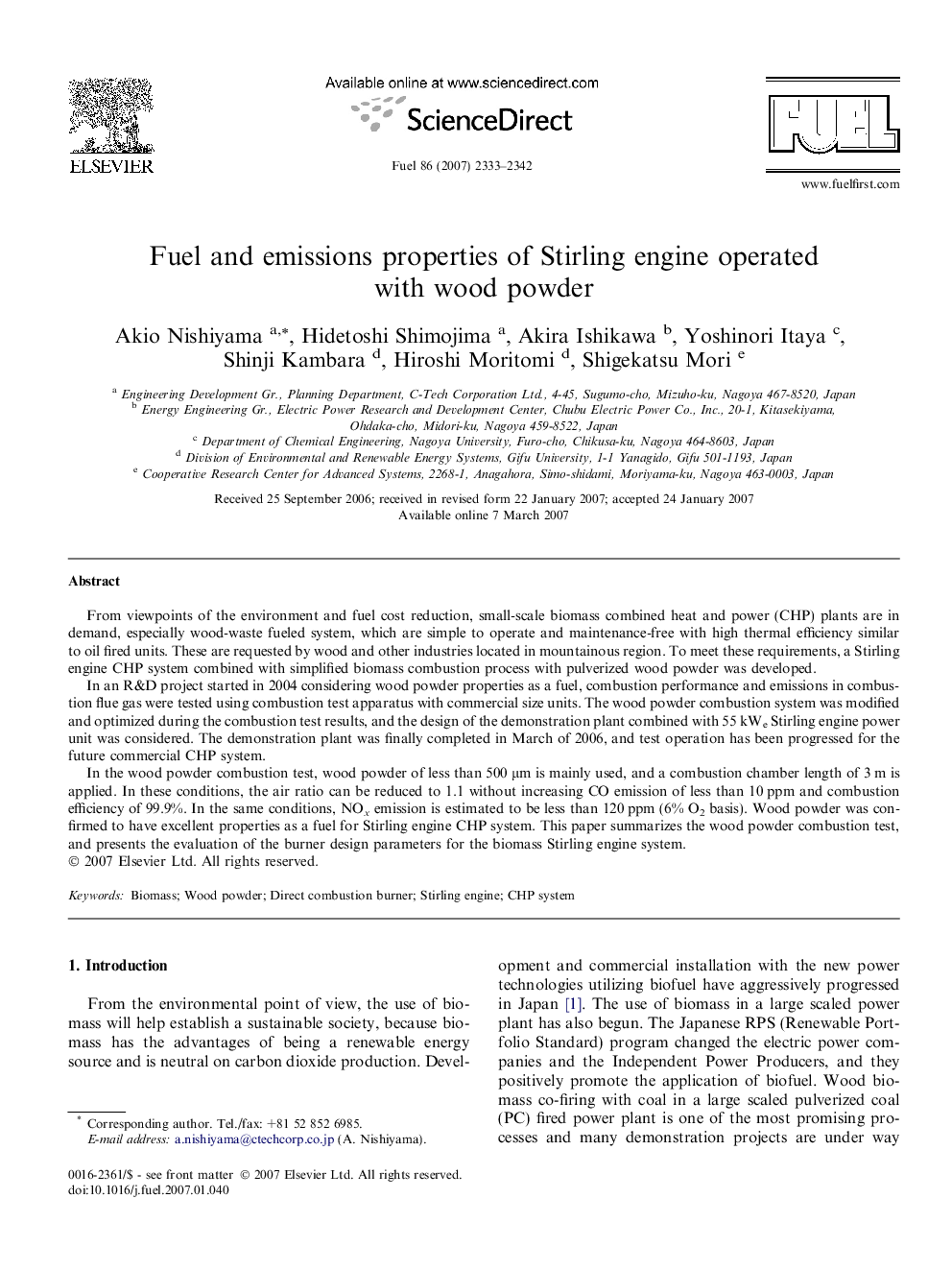| Article ID | Journal | Published Year | Pages | File Type |
|---|---|---|---|---|
| 208200 | Fuel | 2007 | 10 Pages |
From viewpoints of the environment and fuel cost reduction, small-scale biomass combined heat and power (CHP) plants are in demand, especially wood-waste fueled system, which are simple to operate and maintenance-free with high thermal efficiency similar to oil fired units. These are requested by wood and other industries located in mountainous region. To meet these requirements, a Stirling engine CHP system combined with simplified biomass combustion process with pulverized wood powder was developed.In an R&D project started in 2004 considering wood powder properties as a fuel, combustion performance and emissions in combustion flue gas were tested using combustion test apparatus with commercial size units. The wood powder combustion system was modified and optimized during the combustion test results, and the design of the demonstration plant combined with 55 kWe Stirling engine power unit was considered. The demonstration plant was finally completed in March of 2006, and test operation has been progressed for the future commercial CHP system.In the wood powder combustion test, wood powder of less than 500 μm is mainly used, and a combustion chamber length of 3 m is applied. In these conditions, the air ratio can be reduced to 1.1 without increasing CO emission of less than 10 ppm and combustion efficiency of 99.9%. In the same conditions, NOx emission is estimated to be less than 120 ppm (6% O2 basis). Wood powder was confirmed to have excellent properties as a fuel for Stirling engine CHP system. This paper summarizes the wood powder combustion test, and presents the evaluation of the burner design parameters for the biomass Stirling engine system.
